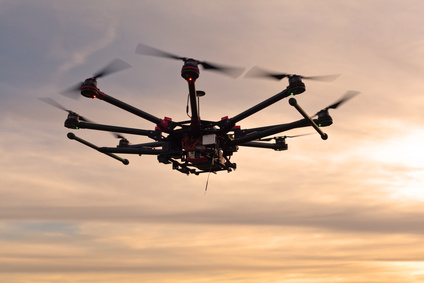Google made major news headlines this week, when it decided to withdraw from Project Maven, after its contract expires next year. This partnership provides AI to the U.S. Department of Defense for drone footage analysis. Internal employee backlash to participation in the project included over 4,000 signatures on a petition requesting that Google withdraw and not work the military in the future, and at least a dozen resignations. The reasons cited generally concerned the potential damage of weaponizing artificial intelligence and the public’s fragile trust.
Drones have been making the news more than usual lately, but most stories revolve around less dramatic uses. However, even TIME acknowledges that drones are having a big impact on the modern world. This week’s cover is making the news, as it features almost a thousand drones and draws attention to the content: a special report on “The Drone Age.”
- How Drones Are Revolutionizing the Way Film and Television Is Made [TIME] “The casual observer’s understanding of what drones can do is mostly informed by the way they’re used to make movies, television shows and commercials. Since 2014, when the use of drones in filmmaking became legal (it is still highly regulated by the FAA), aerial footage captured by drones has become so common that we barely notice it.”
- Drones are helping efforts to free whales from dangerous marine debris [Digital Trends] “He says the camera-equipped machines, which relay real-time footage to the rescue team, help his boats to ‘minimize approaches, give us a different view — an aerial view — of the gear and the animal’s condition … it reduces our risk, having that drone in the toolbox makes the whole procedure a much safer one.'”
- China bets big on civilian cargo drones [TechWire Asia] “The delivery drone, which is 11.9 meters long with a wingspan of 19.6 meters, will be able to fly a distance of 1,500 kilometers with cargo weighing one tonne, or 1,000 kilometers carrying 1.2 tonnes, the company told the SCMP, adding that it could reach a top speed of 400 kilometers per hour.”
- Drones Now Helping First Responders Save People in Hawaiian Lava Path [RealClear] “The U.S. Geological Survey on Wednesday tweeted out the drone footage that helped emergency responders find a path to a home where a resident was trapped and in imminent danger of getting caught in the lava flow, as well as an escape route out.”
From the Ohio Web Library:
- INVASION OF THE DRONES: Drones are doing great things, but are they also threatening every American’s right to privacy? (INVASION OF THE DRONES: Drones are doing great things, but are they also threatening every American’s right to privacy?. (2018). Junior Scholastic, 120(12), 8.)
- U.S. Drones: Smaller, Less Capable Drones for the Near Future (Morris, Z. (2018). U.S. Drones: Smaller, Less Capable Drones for the Near Future. Military Review, 98(3), 38.)
- Climate Drones (Satterlee, L. (2017). Climate Drones. Environmental Forum, 34(4), 42.)


